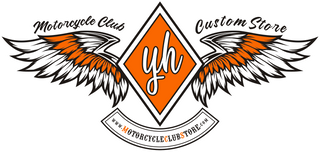Motorcycle clubs are not just about the machines; they represent a rich tapestry of culture, camaraderie, and shared experiences. When designing for a motorcycle club, whether it's patches, logos, or merchandise, it's essential to weave in the club's history and culture. This not only creates a unique identity but also honors the traditions that members hold dear. In this blog, we’ll explore how to effectively integrate club history into your designs, ensuring that they resonate deeply with both current members and future generations.
Understanding Motorcycle Club Culture
At the heart of any motorcycle club is its culture. This culture is built on values such as freedom, loyalty, and a strong sense of community. Many clubs have a storied history that includes founding tales, legendary rides, and notable achievements. When designing, it's crucial to understand these elements. Here are some key aspects to consider:
-
Founding Stories: Every club has its origin story. Incorporate symbols or motifs that reflect the club's foundation, whether it's the year it was established, the location of its first ride, or significant events that shaped its identity.
-
Symbols and Imagery: Motorcycle culture is rich in symbolism. From the iconic skulls and wings to specific animals or objects, these images can convey deeper meanings. Research what these symbols represent within your club's context and incorporate them into your designs.
-
Colors and Typography: Colors often carry historical significance. For instance, black and white might symbolize rebellion, while other colors may represent particular traits or values of the club. Typography can also reflect the club’s personality—bold fonts might convey strength, while script fonts might represent a more laid-back attitude.
Techniques for Incorporating History into Design
1. Create a Visual Timeline
One of the most effective ways to showcase a club’s history is through a visual timeline. This could be integrated into merchandise or displayed at events. Each point on the timeline can feature significant milestones—founding dates, memorable rides, or key achievements. Use images, colors, and typography that reflect the era being highlighted, making it a visually engaging experience.
2. Design Custom Patches
Patches are a staple of motorcycle club culture. They not only serve as a badge of honor but also tell a story. When designing patches, think about how you can incorporate historical elements:
- Incorporate Dates: Include the club’s founding year or dates of significant events.
- Use Traditional Symbols: Draw on traditional imagery that has historical significance to the club.
- Member Contributions: Encourage members to share their personal stories and ideas for patch designs. This can create a more inclusive representation of the club’s culture.
3. Tell a Story Through Merchandise
When creating merchandise, consider how each item can tell a part of the club’s story. For example, a t-shirt design could feature an illustration of a significant ride, paired with a quote from a founding member. Each piece should evoke the spirit of the club’s history while remaining relevant to current members.
4. Leverage Digital Platforms
In today's digital age, leveraging social media and online platforms can amplify the club's history. Create posts that celebrate historical moments, feature member stories, or highlight significant rides. Use hashtags that reflect the club’s identity and encourage members to share their own experiences.
5. Collaborate with Local Artists
Working with local artists who understand motorcycle culture can bring fresh perspectives to your designs. These artists may have their own connections to the club’s history and can create unique pieces that resonate with members. This collaboration can also strengthen community ties and promote local talent.
Case Studies: Successful Integration of History
Case Study 1: The Iron Horse Riders
The Iron Horse Riders, a club founded in the 1970s, uses patches that reflect their history. Their logo features a vintage motorcycle alongside a banner that displays the year of establishment. Each patch includes elements representing significant rides, such as mountains or highways, capturing the essence of their adventures.
Case Study 2: The Steel Stallions
The Steel Stallions have a tradition of storytelling through merchandise. Their t-shirts often feature illustrations of memorable rides, combined with quotes from long-standing members. This not only keeps the history alive but also engages new members, encouraging them to learn about the club's rich past.
Conclusion
Incorporating motorcycle club history into design is a powerful way to honor the culture that unites members. By understanding the significance of symbols, colors, and storytelling, you can create designs that resonate deeply within the community. Whether through patches, merchandise, or digital content, celebrating the club's history fosters a sense of belonging and pride. As you embark on your design journey, remember that every element is an opportunity to connect with the club’s heritage and inspire future riders.
